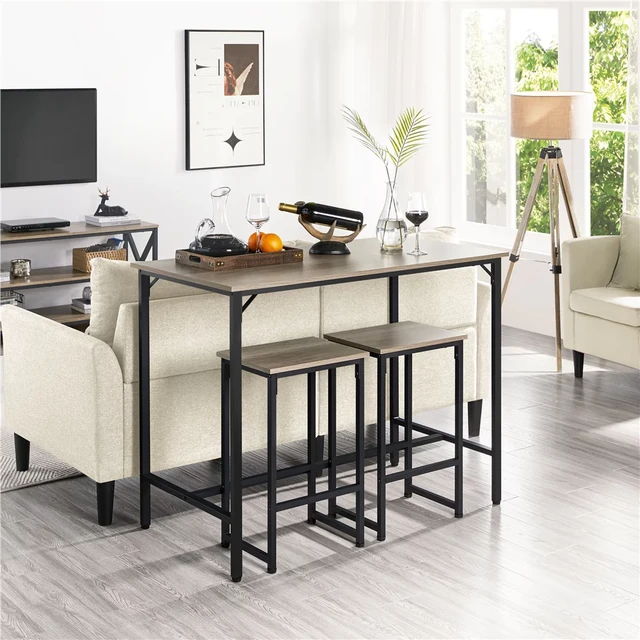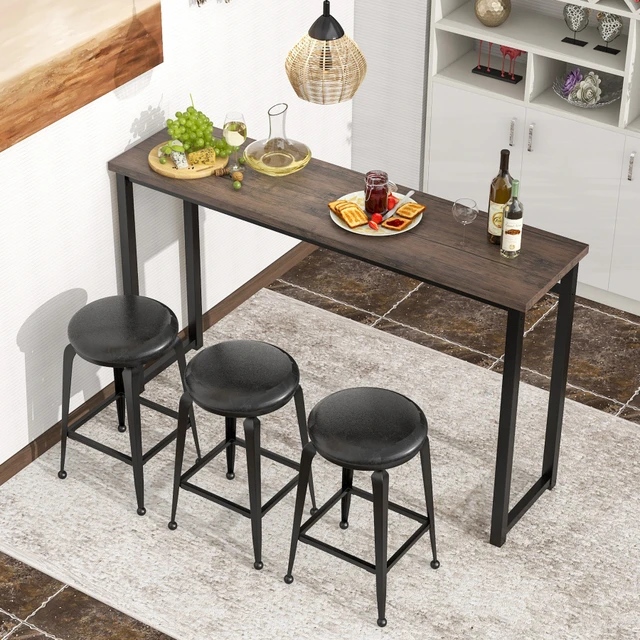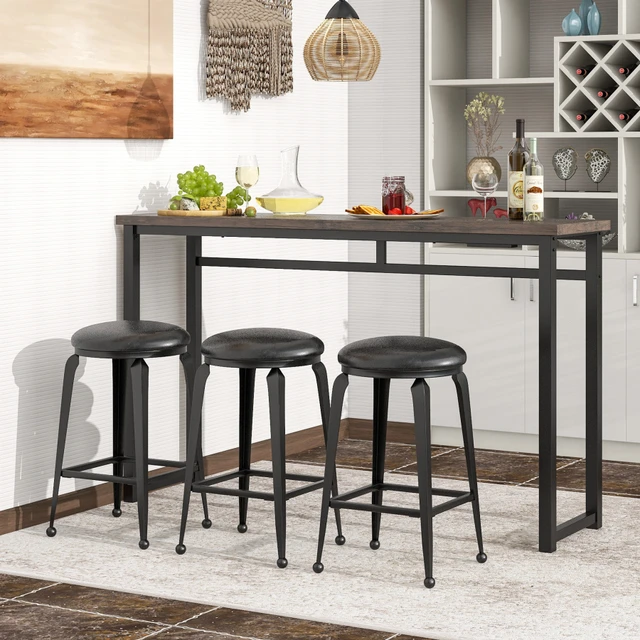 Introduction:
Introduction:
The height of a kitchen table plays a vital role in creating a comfortable and functional dining space. Whether you’re enjoying a meal with family or friends, working on a project, or simply using the table as a gathering place, a well-suited height ensures a pleasant experience. In this comprehensive guide, we will explore the factors to consider when determining the height of a kitchen table, helping you find the perfect balance between comfort and functionality.
Ergonomics and Comfort:
Proper Seating Posture:
The height of a kitchen table should allow for proper seating posture, ensuring that your feet can rest flat on the floor and your knees are at a comfortable angle.
Elbow Resting Position:
The table height should also allow your elbows to rest comfortably on the table surface when sitting upright, promoting relaxed dining or working positions.
Standard Heights:
Standard Kitchen Table Height:
The standard height for a kitchen table is around 30 inches (76 cm). This height accommodates most standard dining chairs and allows for comfortable seating.
Counter Height:
Counter-height kitchen tables typically range from 34 to 36 inches (86 to 91 cm). These tables are slightly taller and are ideal for casual dining or for individuals who prefer a higher seating position.
Considerations for Specific Needs:
Family-Friendly Considerations:
If you have young children, consider a lower table height to accommodate their smaller stature. A table height of around 26 to 28 inches (66 to 71 cm) may be more suitable for family-friendly dining.
Accessibility Needs:
Individuals with mobility issues may require a table height that allows for easy access and comfortable use of mobility aids such as wheelchairs or walkers. An adjustable-height table may be a suitable option in such cases.
Matching Table Height with Chairs:
Chair Seat Height: When choosing chairs for your kitchen table, consider their seat height in relation to the table height. The seat height should allow for proper alignment with the table surface, ensuring comfort and functionality.
Chair Backrest Height: If your kitchen table has a lower height, consider chairs with a higher backrest to provide additional support and comfort.
Functionality and Space Considerations:
Table Size and Shape: The size and shape of your kitchen table can also impact the perceived height. A larger table may require a slightly lower height for ease of use, while a smaller table may benefit from a higher height to create visual balance.
Clearance Space: Ensure that there is ample legroom beneath the table to allow for comfortable seating. A minimum clearance of about 24 inches (61 cm) between the underside of the table and the floor is recommended.
Personal Preferences and Style:
Aesthetic Appeal: The height of your kitchen table should align with your personal preferences and the overall style of your kitchen or dining area. Consider the aesthetic appeal and how it complements the surrounding decor.
Design Versatility: Some kitchen tables have adjustable heights, providing the flexibility to adapt to different needs and preferences. This versatility allows for customization and ensures a comfortable experience for various activities.
Conclusion:
Finding the ideal height for your kitchen table is crucial for creating a comfortable and functional dining or workspace. Consider factors such as ergonomics, standard heights, specific needs, chair compatibility, functionality, and personal preferences to determine the best table height for your space. By striking the right balance between comfort and functionality, you can enhance your dining experience, promote proper posture, and create an inviting environment in your kitchen or dining area.

